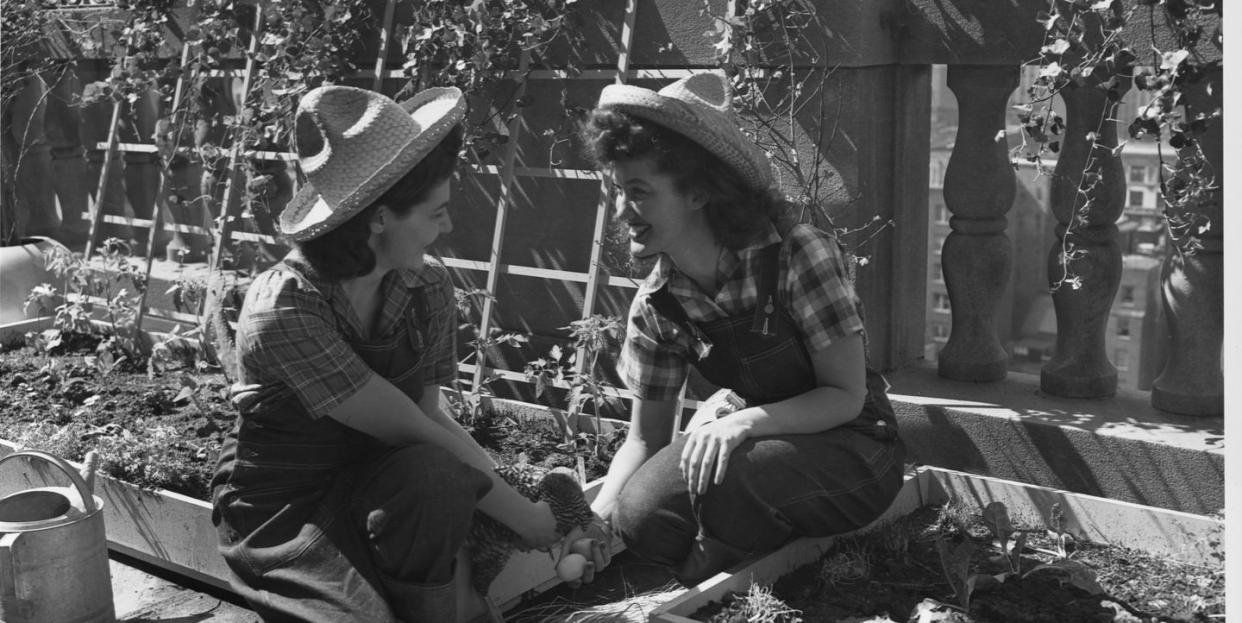It's Not Too Late to Plant a Summer Victory Garden

This summer's not going to look like what we thought. We'll be working at home, making and eating more meals at home, and perhaps even taking "staycations" at home. But there's one place we can all safely go to get away from the daily grind: our yards. One throwback idea that's currently bubbling up in backyards from Maine to Mississippi? The Victory garden.
"Mr. Crockett's The Victory Garden, which aired on PBS in the 1970s, is one of my favorite gardening shows, and I love that this idea is back," says landscape architect Janice Parker, a recipient of VERANDA'S 2020 Outdoor Living Awards for her reinvention of an old Christmas tree farm into a series of outdoor rooms in New York's Hudson Valley.
When all else fails, "you can count on nature," says Parker. "I have this enormous reliance on Mother Nature. The minute you touch the natural world with respect...it comes back at you hundredfold."

Victory gardens originated during World War I, when citizens were encouraged to grow their own produce on both private and public land to ease the burden on the national food supply during wartime. President Woodrow Wilson supported the effort, describing gardening as “just as real and patriotic an effort as the building of ships or the firing of cannon.”
Some five million gardens were planted in the U.S., and the United States School Garden Army was founded in 1917 to teach and encourage gardening among school children with the hopes of combatting potential food scarcity after the war.
The idea of supplementing one's nutrition with a backyard garden persisted during the Spanish flu outbreak of 1918 and came roaring back across the world with the outbreak of World War II and subsequent food rationing to ensure troops had enough to eat.
In the United Kingdom, Victory gardens were planted in backyards, on rooftops, at Buckingham Palace, and even in vacant lots. In the U.S., civilians were encouraged to grow produce to reduce the cost of fruits and vegetables needed to supply the troops. By 1943, there were 18 million Victory gardens planted in the U.S., including on the White House lawn.
Then, as now, these gardens were meant to offer a sense of control over the simple act of feeding oneself. Unsure about your ability to safely purchase the food you want or need? You can always grow it in your own backyard, thereby reducing not just your dependency on the national food supply but also the frequency of your trips to the grocery store or market. Or so the thinking goes.
But Victory gardens also served an additional purpose back then that's taking root today as well: cultivating a sense of community and reward in the face uncertainty. In the 1940s, local communities held festivals to showcase what people had grown on their own; today, Americans are sharing their efforts on Instagram, with over 76,000 posts tagged with the hashtag #victorygarden.
Parker notes many of her clients "who never had time before to get their hands dirty in the garden" have requested her help with DIY gardening projects at their homes during the quarantine.
"I've been FaceTiming with my clients on the weekends to help them with landscaping and gardening projects, which have been enormously helpful for people home with their kids, even teenagers and grown children."
Like so many Americans, her clients are most interested in planting vegetable gardens "because produce is pretty easy—and it's rewarding," says Parker, adding, "It's definitely not too late. We actually do a lot of landscaping in the summer."
Here are her five tips for growing a Victory garden this summer.
Grow what you like to eat. "You have to do it to be comfortable for you. I am a big advocate for people doing their own gardens that make them happy. If you don't love it, you probably won't take care of it properly, and you won't be successful."
Cultivate whatever space you have. "I love to drive through the city and see gardens on a fire escape. Put some tomatoes in a pot—any pot. Grow some peppers, grow some basil."
Involve the whole family. "Plant something like greens or radishes. These are all really rewarding for kids. You need a sprawling area to grow pumpkins but those would also be fun for kids come fall. And peanuts or beans of any kind are also fun for kids."
Don't be afraid to experiment. "You gotta have some area of your yard that is just not picture perfect, where you can experiment and it doesn't matter how it looks. A lot of experiments don't work out, but that shouldn't stop us."
Take your furniture outside. "Back before there actually was outdoor furniture, the Russian aristocracy would take their rugs and furniture outside and then bring them in at the end of the day. If you don't have the budget for outdoor furniture right now, take your furniture outside. You just have to get out there. Make yourself comfortable and dig in."
You Might Also Like